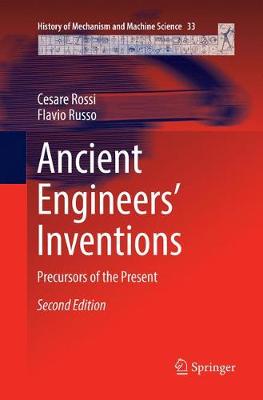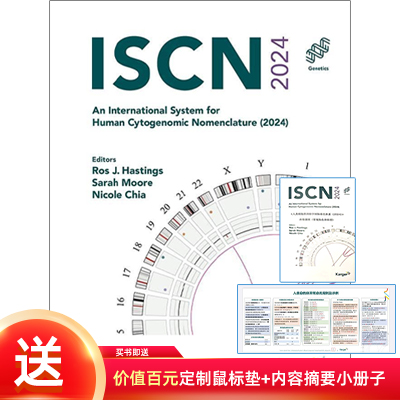图书简介
This book describes the inventions and designs of ancient engineers who are the precursors of the present. The period ranges mainly from 300 B.C. to 1600 A.D. with several exceptions. Many of the oldest inventions are documented by archaeological finds, often very little known, mainly from Pompeii, Herculaneum and Stabiae and reveal a surprising modernity in their conception.Most of the inventions presented in the first four parts of this book were conceived up to the late Roman Empire and may be considered as milestones, each in their respective field. The fifth part concentrates on more recent centuries. The sixth part deals with some building construction techniques.
Generally, for each of the presented inventions, three elements of research and reference are provided: written documents (the classics), iconic references (coins, bas-reliefs, etc.) and archaeological findings.
The authors did not write this book for engineers only; hence they describe all the devices without assuming wide technical knowledge. The authors’ main aim is to try to communicate their enthusiasm for the inventions and the inventors of the past and to contribute to the fascinating study of the History of Engineering.
This second edition includes new topics and chapters that are of special interest to engineers.
Premise: Representing and Measuring the Environment.- A premise: it all started with a drawing.- I.1 Elevations, Plan and Sections.- I.2 Protohistoric Drafting machine for the clay tablets engraving.- I.3 Examples of planimetries from the IV millennium B.C. to the I century A.D..- I.4 Ancient Units.- 1. Measuring Mass.- Introduction.- 1.1 The balance scale.- 1.2 The steelyard balance.- Observations.- 2 Measuring Distance and Slope.- Introduction.- 2.1 Jacob’s staff.- 2.2 Range finders.- 2.3 The Astrolabe.- 2.4 The dioptre by Heron.- 2.5 The ancient odometers.- Observations.- Measuring a building height by an astrolabe.- Measuring the distances by the groma and by the surveyor’s cross.- 3 Measuring Time.- Introduction.- 3.1 The sundial.- 3.2 Water clocks.- Observations.- 4 Orientation.- Introduction.- 4.1 The Sundial Compass.- 4.2 The Chinese South-Pointing Chariot Sundial Compass.- 4.3 The Windrose and the Magnetic Compass.- 5 Ancient Computation Devices.- Introduction.- 5.1 The Abacus.- 5.2 The Mesolabio.- 5.3 The Mechanism of Antikitera.- Observations.- 6 The Natural Energy Used In Antiquity.- Introduction.- 6.1 Energy from man.- 6.2 Energy from animals.- 6.3 The capstan.- 6.4 The treadwheel.- 6.5 Rough evaluation of the power from a wind motor.- 6.6 Rough evaluation of the power from a waterwheel.- 7 Wind Motors.- Introduction.- 7.1 The wind mills.- 7.2 Wings on the sea: the sails.- 7.3.3 The Flettner rotor.- Observations.- 8 Hydraulic Motors.- Introduction.- 8.1 Water wheels with vertical axis.- 8.2 Water wheels with horizontal axis.- 8.3 The floating mill.- 8.4 Water wheels in the Middle Ages and the Renaissance.- Observations.- 9 Refrigeration and Heating.- 9.1 Air Cooling with Wind Towers.- 9.2 The production of ice.- 9.3 Nero’s Sherbet.- 9.3 Wheat Pits.- 9.4 Heating and Thermal Baths.- 9.5 Energy Saving: the Sun Chimney Heating and Thermal Baths.- 10 The Production Of Water.- 10.1 The Air Well.- 10.2 The Dew Basin.- 10.3 The Qanat.- 10.4 Distillation.- 11 Lifting Water.- Introduction.- 11.1 The early devices.- 11.2 The Archimedes’ screw.- 11.3 Norias.- 11.4 Pumps.- Observations.- 12 Adduction and Distribution of Water.- Introduction.- 12.1 Open ducts.- 12.2 Penstocks.- 12.3 The great cisterns.- 12.4 Water distribution systems.- 12.5 Pipes.- 12.6 Valves.- 12.7 Hydraulic mining.- Observations.- 13 Underwater Activities.- Introduction.- 13.1 Scuba divers.- 13.2 Diving bell.- 14 Transports.- Introduction.- 14.1 Roman charts.- 14.2 Railed cargo.- 14.3 The rails of Pompei.- 14.4 Ancient self-propelled vehicles.- 14.5 Early ball bearings.- 14.6 Transport on water.- 14.7 Cableways.- 14.10 The dawn of the flight in the antiquity.- Observations.- 15 Telecommunications.- Introduction.- 15.1 Acoustic.- 15.2 Carrier pigeons.- 15.3 Optical telecommunication systems.- 15.4 Lighthouses.- 15.5 The water telegraph.- Observations.- 16 Medicine and Health.- Introduction.- 16.1 Medical Assistance provided to Legionnaires.- 16.2 Reconstructive Plastic Surgery.- 16.3 Early Penicillin.- 16.4 The Beginning of Biological Warfare.- 17 Secondary Motors.- Introduction.- 17.1 Cranes and tackle.- 17.2 Gravity driven elevators.- 17.3 Siege towers.- 17.4 The trebuchet.- 17.5 Flexion elastic motors.- 17.6 Torsion elastic motors.- 17.7 Throwing machines operated by torsion motors.- 17.8 Mechanics of the throwing machines.- 17.9 Pneumatic motors.- 17.10 Small spring motors.- 17.11 Ancient steam engines.- Observations.- 18 Spinnind and Weaving.- Introduction.- 18.1 The dawn of spinning and weaving.- 18.2 The spinning wheel.- 18.3 The mechanical spinning.- 18.4 The automatic weaving.- Observations.- 19 Some Applications of Fire.- Introduction.- 19.1 Fire ignition.- 19.1.2 Optical flints.- 19.2 Marine fire – the Roman candle.- 19.3 Wind lanterns.- 19.4 Fire for warming.- 19
Trade Policy 买家须知
- 关于产品:
- ● 正版保障:本网站隶属于中国国际图书贸易集团公司,确保所有图书都是100%正版。
- ● 环保纸张:进口图书大多使用的都是环保轻型张,颜色偏黄,重量比较轻。
- ● 毛边版:即书翻页的地方,故意做成了参差不齐的样子,一般为精装版,更具收藏价值。
关于退换货:- 由于预订产品的特殊性,采购订单正式发订后,买方不得无故取消全部或部分产品的订购。
- 由于进口图书的特殊性,发生以下情况的,请直接拒收货物,由快递返回:
- ● 外包装破损/发错货/少发货/图书外观破损/图书配件不全(例如:光盘等)
并请在工作日通过电话400-008-1110联系我们。
- 签收后,如发生以下情况,请在签收后的5个工作日内联系客服办理退换货:
- ● 缺页/错页/错印/脱线
关于发货时间:- 一般情况下:
- ●【现货】 下单后48小时内由北京(库房)发出快递。
- ●【预订】【预售】下单后国外发货,到货时间预计5-8周左右,店铺默认中通快递,如需顺丰快递邮费到付。
- ● 需要开具发票的客户,发货时间可能在上述基础上再延后1-2个工作日(紧急发票需求,请联系010-68433105/3213);
- ● 如遇其他特殊原因,对发货时间有影响的,我们会第一时间在网站公告,敬请留意。
关于到货时间:- 由于进口图书入境入库后,都是委托第三方快递发货,所以我们只能保证在规定时间内发出,但无法为您保证确切的到货时间。
- ● 主要城市一般2-4天
- ● 偏远地区一般4-7天
关于接听咨询电话的时间:- 010-68433105/3213正常接听咨询电话的时间为:周一至周五上午8:30~下午5:00,周六、日及法定节假日休息,将无法接听来电,敬请谅解。
- 其它时间您也可以通过邮件联系我们:customer@readgo.cn,工作日会优先处理。
关于快递:- ● 已付款订单:主要由中通、宅急送负责派送,订单进度查询请拨打010-68433105/3213。
本书暂无推荐
本书暂无推荐














